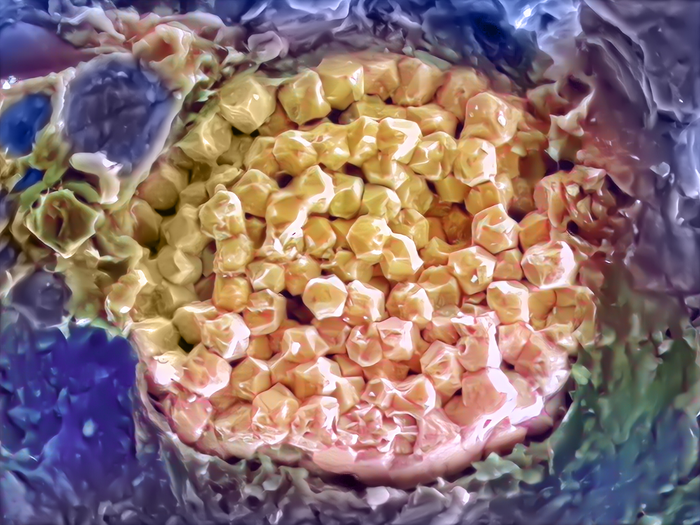Tiniest ancient seawater pockets revealed in 390-million-year-old rocks
The discovery could identify ways to safely transport hydrogen as a carbon-free fuel source, writes Aisha Rimi


Scientists have discovered the tiniest ancient seawater pockets trapped in rocks in North America for 390 million years.
It is not uncommon for minerals and gems to contain small pockets of trapped liquid. But the surprising discovery revealed what was inside the tiny liquid remnants.
The results confirmed that the water trapped inside the rock fit the chemistry profile of the ancient inland saltwater sea that once occupied upstate New York, where the rock originated.
During the Middle Devonian period, this inland sea stretched from present-day Michigan to Ontario, Canada, and fostered a coral reef equal to Australia’s Great Barrier Reef.
The waters were home to sea scorpions the size of a pickup truck, as well as now-extinct creatures such as trilobites and the earliest examples of horseshoe crabs.
But due to the changing climate, most of the creatures disappeared, leaving behind only fossil remains that eventually became the pyrite rock sample used in the experiment.
The report, published in the journal Earth and Planetary Science Letters, can help scientists understand how oceans change and adapt to the changing climate over the long span of geologic time.
“We use mineral deposits to estimate the temperature of the ancient oceans,” said Daniel Gregory, a geologist at the University of Toronto, and one of the study leaders.
“Salt deposits from trapped seawater [halite] are relatively rare in the rock record, so there are millions of years missing in the records, and what we currently know is based on a few localities where there is halite found.
“Sampling with this technique could open up millions of years of the geologic record and lead to a new understanding of changing climate.”
The research was also able to explain another environmental issue of toxic arsenic leaching from rock. Tiny defects on these particular pyrite minerals appeared as clusters of raspberry-looking segments under the segments. Scientists described the appearance as framboids —derived from the French word for raspberry.
“We looked at these samples through the electron microscope first, and we saw these kinds of mini bubbles or mini features within the framboid and wondered what they were,” said Sandra Taylor, first author of the study and a scientist at the Department of Energy’s Pacific Northwest National Laboratory.
The team confirmed that the bubbles contained water and their salt chemistry matched that of ancient seas.
The study can also help scientists understand how hydrogen can be safely stored underground and transported for use as a carbon-free fuel source.
“Hydrogen is being explored as a low-carbon fuel source for various energy applications. This requires being able to safely retrieve and store large amounts of hydrogen in underground geologic reservoirs. So it’s important to understand how hydrogen interacts with rocks,” said Ms Taylor.
“Atom probe tomography is one of the few techniques where you can not only measure atoms of hydrogen, but you can actually see where it goes in the mineral. This study suggests that tiny defects in minerals might be potential traps for hydrogen.”
As a result, the technique could contribute to scientists’ understanding of what is going on at the atomic level, and subsequently, in finding the best strategies for hydrogen storage in the subsurface, she concluded.






Join our commenting forum
Join thought-provoking conversations, follow other Independent readers and see their replies
Comments